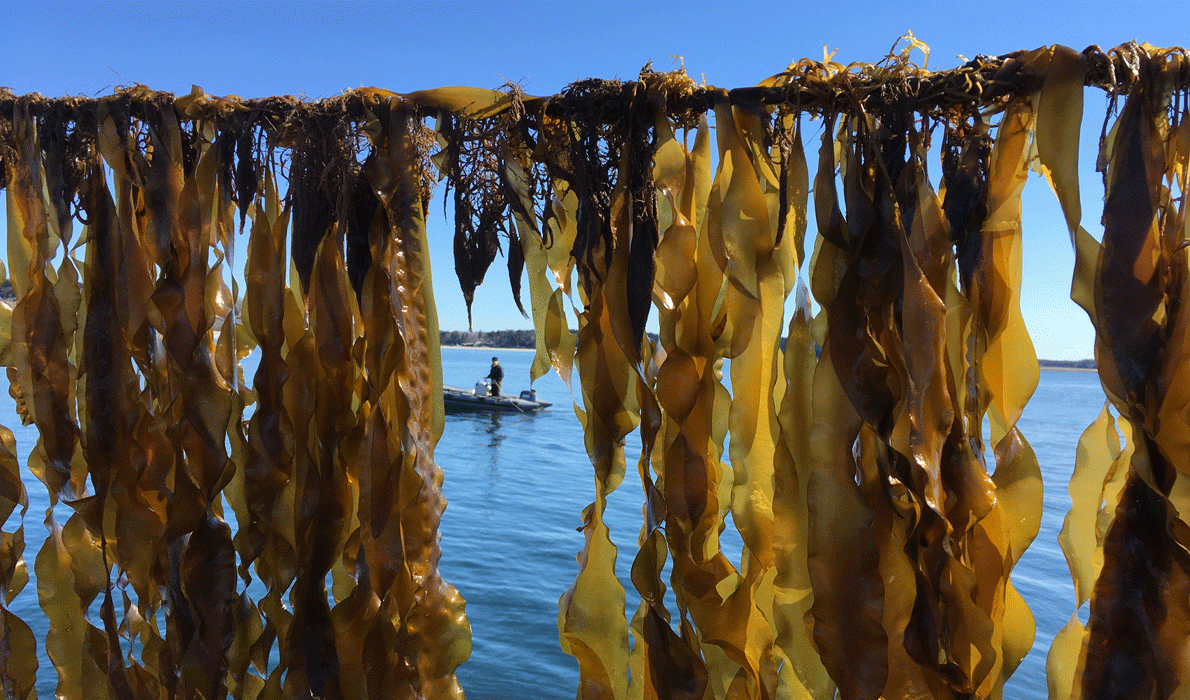Posted October 26, 2018
Last modified October 31, 2018
By Susie Arnold
Without a doubt, aquaculture is a major growth industry in the state. And it is not just about finfish. Shellfish and seaweed farming are on the rise.
A recent market study, commissioned by the Gulf of Maine Research Institute, found that Maine has the potential to become a national leader in the farmed shellfish market, and to quadruple the landed value of shellfish over the next 15 years.
The industry is not without risks, of course. With climate change and coastal development come warming waters, more frequent harmful algal blooms, ocean acidification, and other threats to water quality.
Ocean acidification is the changing chemistry of the ocean due primarily to uptake of atmospheric carbon dioxide (CO2), but additional nearshore factors such as polluted runoff can exacerbate the problem in coastal waters. The negative impacts of ocean acidification on shell-builders—like clams, oysters, scallops, and mussels—are well documented, but there may actually be positive impacts of increased carbon dioxideon photosynthesizers like seaweed.
Initial research suggests that most species of seaweed studied have increased productivity and growth. Research from Dr. Nichole Price’s lab at Bigelow Laboratory for Ocean Sciences demonstrates that sugar kelp—the long, brown, flat blades that attach to rock in shallow water and the most common farmed seaweed in Maine–does particularly well in a high CO2world. The more CO2you give it, the more it absorbs.
It turns out that kelp is remarkable for other reasons. It not only takes up carbon dioxide, but also nitrogen and phosphorous, other elements that oceans can have in excess. So much so, that kelp farms are being considered as nitrogen “bioremediators” outside of wastewater treatment outfalls to help take up nitrogen.
As aquaculturists, old and new, consider their business plans and the species they are growing, it may be worth following some of the latest research investigating the potential benefits of co-culturing seaweed, such as kelp, along with shellfish.
Results from a team including Bigelow, Island Institute (publisher of The Working Waterfront), the University of New Hampshire, Bangs Island Mussels, and Ocean Approved, the nation’s first commercial kelp farm growing kelp for human consumption, show that primary production of sugar kelp can take up enough CO2to remediate local waters from ocean acidification, a process called “phytoremediation.”
Even more exciting is the finding that farmed mussels located within the kelp farm produce stronger shells and larger meats than those reared outside the kelp.
“We took the mussels to the local dentist to X-ray the shells,” Bigelow Lab’s Price reported, “and were surprised to discover they are denser and thicker when grown with kelp.”
For three kelp growing seasons (approximately November to June), the team has been monitoring carbonate chemistry, or the water quality parameters needed to measure ocean acidification, using moored instruments inside and outside of the Ocean Approved kelp farm off of Chebeague Island in Casco Bay. Based on data from the first two seasons, there is a spatially and temporally variable “phytoremediation halo effect” of improved water chemistry around the kelp.
This past season, in addition to the moored monitoring instruments, the team put out cages containing hundreds of juvenile mussels inside the farm and at varying distances outside the farm during the spring, prior to the kelp harvest. Preliminary results suggest that shell strength of the mussels and meat mass is significantly higher within the “halo” region.
“I was shocked to see such striking results for juvenile mussels after just two months,” said Price. “Even if the overlap for cultivation between mussels and kelp is only in the spring, kelp can improve mussel quality and decrease vulnerability to breakage during harvest and shipping.”
On the docket to further explore these findings is a lab experiment at Bigelow to determine juvenile mussel and “seed” performance with and without kelp in current and future temperature and CO2conditions. The theory is that if kelp helps mussels now, its contribution might be even more meaningful in a future high CO2world.
The benefits of co-culture may not end there. In Canada, preliminary research points to the possibility that farming sugar kelp above mussel lines can reduce predation of mussels from diving ducks by hiding the mussels from the duck’s vision field. Additionally, the University of New England is looking into whether kelp detritus, or the particles naturally shed by degrading kelp, can provide a nutritional supplement for nearby farmed shellfish.
While these research areas are still in the nascent stages of pinpointing the exact mechanisms for mussel success, it is exciting to explore the ecologic and economic benefits of co-culture for the good of this burgeoning industry.
Susie Arnold is a marine scientist, Kate Tagai is a senior community development officer, and Allison Carmen is an infrastructure finance specialist with the Island Institute.

Contributed by




